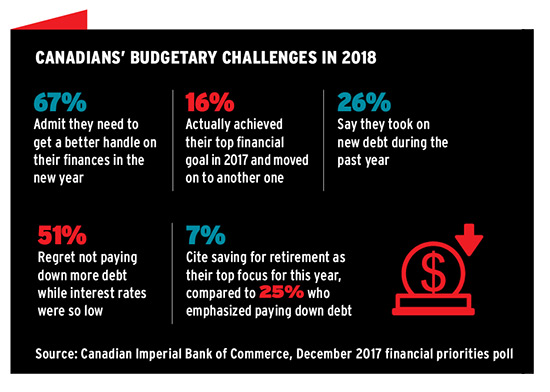
In order to understand how much to save, the starting point should be determining a retirement budget. Not only will such an exercise help employees better plan for the future, it may well give them a greater understanding of and appreciation for their employer-sponsored savings program and improve their financial wellness.
More accurate retirement planning
Even though people want to know how much they need to put aside for their golden years, that doesn’t necessarily mean they’re eager to do the math. Those who want a quick and easy answer are welcome to use the standard replacement ratio of 70 per cent of working income as their guide. However, what they need to realize is that goal may not only be unrealistic, but it’s probably inappropriate. A 60 per cent or even 50 per cent replacement ratio may be quite adequate for those who have a moderate household income and want to maintain their lifestyle in retirement. In short, it pays to do the math.
Read: Top 50 DC Plans Report: What’s the magic number for DC pension contributions?
The budgeting approach puts the initial focus on retirement spending. It leads to a more accurate determination of an appropriate retirement replacement ratio for the individual, as well as what a person has to save to support that lifestyle.
Creating a retirement budget
The starting point for retirement budgeting is to look at current spending. Last year’s tax return shows what an individual earned and paid in taxes. The person either spent or saved the difference between the two. The next step is to look at the various categories of spending and saving and think about which expenses will disappear, decrease, stay the same or rise. Following the money trail can be an eye-opening experience and may highlight where someone could cut spending in order to save more.
Retirement budget worksheets generally contain spots to record various categories of current expenses, as well as estimates for the same costs in retirement. Comparing the two columns — pre- and post-retirement expenses — indicates an approximate retirement ratio.
Budgeting for retirement when employees are quite young requires some assumptions, such as owning and having paid off a house by the time they retire. Other expenses employees may have while they’re working, but not in retirement, include Canada Pension Plan and employment insurance premiums, savings plan contributions, commuting expenses, uniform or dry cleaning costs and the price of a daily restaurant lunch.
Read: Canadians estimate $756K will provide a comfortable retirement
Depending on what a person’s retirement plans include, there may well be additional expenses in the budget once the daily work schedule no longer applies. There will be more time for travel, hobbies and cultural activities. Retirees may now have to pay for other expenses, such as the cost of insurance and certain health-care coverage, that an employer’s plan had previously covered. They’ll also have to account for those aspects in the budget.
There will also be ongoing expenses not affected by work status, such as property taxes, home maintenance, gifts and car and home insurance.
The closer a person is to retirement, the easier it will be to estimate expenses and create a more accurate budget. That doesn’t mean an employee should wait until age 50 to conduct the exercise, especially since the earlier people start saving for retirement, the greater the likelihood of achieving their savings goals. It does mean they should revisit a retirement planning budget often and update it as circumstances change, both before and after retirement. Conditions are no more static after retirement than they are beforehand, and it’s important to revise budgets as people progress from the honeymoon phase of early retirement through to the point where they may need to sell the family home and move to an assisted-living facility.
The employer’s role in retirement planning
With a budget figured out — even one that will likely change over time — the next step is to determine sources to fund that future lifestyle. Information about income from employer-sponsored plans and the government may be readily available on an organization’s employee portal, complete with a retirement calculator and other tools, but employees may not know where to find it.
Read: Three tips for improving employees’ pension literacy
If employers find employees aren’t accessing those resources often, they may want to consider revamping the way they share information. When material is available in a user-friendly format, people are more likely to read it. Employers can consider sharing information in life stages (referring, for example, to events such as having a baby and saving for retirement), rather than, or in addition to, putting it under headings like “pension plan.” Once employees realize how much of their retirement budget already comes from their employer plan, they may appreciate the benefit more.

Employees will also gain a better understanding of how much they’ll need to save themselves in order to afford the retirement they’re envisioning. The organization may then want to take an active role in helping employees achieve their savings goals by offering assistance through retirement planning workshops and other vehicles.
Following the three-step process of establishing a retirement budget, identifying sources of income and determining and achieving savings goals — perhaps with the employer’s assistance — can help employees transition to retirement earlier and more easily, secure in the knowledge that they have sufficient savings to help them enjoy life after work.
Nichola Peterson is a partner at Morneau Shepell Ltd. and leads its retirement planning seminars practice.
